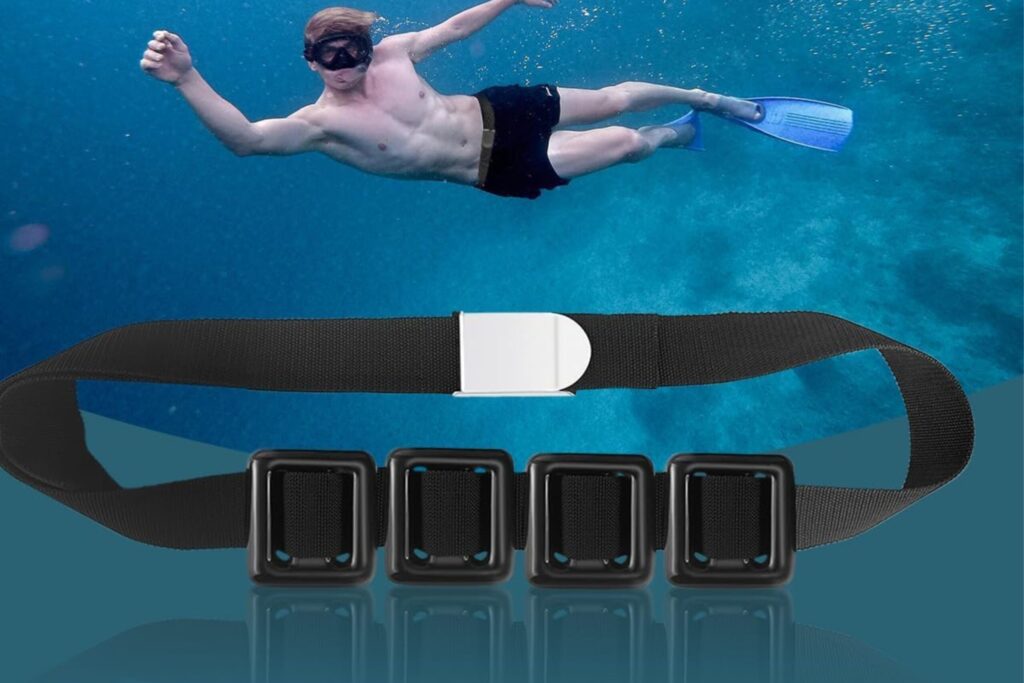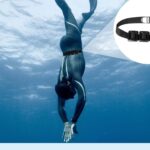How To Know What Diving Weight You Need – The Complete Guide for Every Diver
Diving weight belt stories often begin with someone either sinking too fast or bobbing on the surface like a lost pool toy. If you have ever watched a fellow diver spin mid-water trying to stay down, you know the silent panic of getting weight wrong. The goal of this guide is to make sure that never happens to you.
Right now, you might be asking the big question: how to know what diving weight you need without guesswork or confusion? Let’s start with the answer, so you can use it on your next.
How to Know What Diving Weight You Need
Finding the correct diving weight is about balance. Too much weight and you fight to stay afloat. Too little weight and you cannot descend or hold position underwater. Here is the simple method most experts use:
- Body weight and exposure suit: Start with 10% of your body weight if you are wearing a full wetsuit. Lighter wetsuits or dive skins may need less.
- Freshwater vs. saltwater: Add about 2–4 extra pounds for saltwater because it increases buoyancy.
- Tank type: Aluminum tanks get lighter as you breathe, so add 2 pounds compared to steel tanks.
- Gear and accessories: Heavier fins, lights, and cameras might mean you need slightly less lead since they weigh you down already.
- Fine-tuning: At the end of your dive with 500 psi left in the tank, you should float at eye level holding a normal breath. If you sink, remove weight next time. If you float high, add a pound or two.
This is the fast way to know how much weight diving requires for your setup. But real-world diving has many variables: body composition, gear type, and water conditions all matter. That’s why we discuss each factor next.
|
|
|
|
Why Getting Your Diving Weight Right Matters
Imagine planning the perfect trip with your scuba diving gear set, only to spend the whole dive struggling to stay balanced. Being too heavy wastes energy and air because you fight to stay off the bottom. Too light, and you cannot descend, missing the reef entirely.
Accurate weighting keeps you safe, improves air consumption, protects marine life, and makes dives relaxed instead of stressful. For free diving, correct weight is even more critical since you lack a tank’s buoyancy shift to help you.
Factors That Decide Your Ideal Diving Weight
1. Body Composition and Fitness Level
Muscle sinks. Fat floats. Two divers with the same weight may need different amounts of lead because muscle is denser than fat. This is why divers often test weighting rather than relying only on charts or a scuba diving weight calculator.
2. Wetsuit Thickness and Material
Neoprene wetsuits have tiny bubbles that compress underwater. A brand-new thick wetsuit adds lots of buoyancy at the surface, so you need more lead. As it ages, it loses buoyancy, meaning you might remove some weight over time.
3. Freshwater vs. Saltwater
Saltwater holds you up like a supportive friend. Expect to add a few pounds for ocean diving compared to a freshwater lake.
4. Tank Type and Size
An empty aluminum tank is more buoyant than a steel one. That is why scuba how much weight charts often recommend slightly more weight when using aluminum tanks.
5. Accessories and Dive Environment
Underwater photographers sometimes add weight to stay steady while filming. Strong currents may require extra control. This is why testing weight before serious dives is non-negotiable.
Tools That Help: From Calculators to Check Dives
Many divers now use a scuba weight calculator or a free diving weight calculator as a starting point. These tools estimate weight based on your body, gear, and location, but real-world testing still matters.
A simple buoyancy check at the dive site tells you if the calculator was right. Stand in water at chest level with all gear on. Hold a normal breath. If you float at eye level and sink when you exhale, you are close to perfect weighting.
How Much Weight Diving Usually Requires
For most beginners wearing a full 7mm wetsuit in saltwater, 10–12% of body weight works. In warm tropical water with a thin suit, 6–8% might be enough. Scuba weight calculator tools give a rough idea, but your own test dives will fine-tune this better than any chart.

How To Know What Diving Weight You Need In Kg
Here is a simple way to know what diving weight you need in kilograms:
- Start with your body weight
A common rule for scuba diving is to begin with about 10% of your body weight if diving in salt water and 5–7% in fresh water.
For example, if you weigh 70 kg, start with around 7 kg in salt water. - Adjust for exposure suit thickness
A thicker wetsuit adds more buoyancy because neoprene traps air.- 3 mm suit: Add 1–2 kg
- 5 mm suit: Add 2–3 kg
- 7 mm suit: Add 4–5 kg
- Factor in the tank
Aluminum tanks get more buoyant as they empty, so you might need 1–2 kg extra compared to steel tanks. - Perform a buoyancy check
At the water’s surface with your scuba diving gear set on, deflate your BCD, hold a normal breath, and float at eye level. If you sink slowly when you exhale, the weight is correct. If you drop like a rock, remove 1–2 kg and test again. - Fine-tune after the dive
After your first dive, note how easy it was to control buoyancy. Adjust by 0.5–1 kg at a time until you feel perfectly balanced.
Differences Between Scuba and Free Diving Weighting
Free divers use less weight since they dive without tanks. Their goal is to be slightly positive at the surface and neutral at about 30 feet for safety. If you sink too quickly while free diving, you risk going too deep without enough energy to return safely.
Learning How to Snorkel and Dive with Proper Weighting
Even if you start with a simple snorkeling gear set before moving to scuba, learning about buoyancy early helps. For scuba, lessons on how to scuba dive always include weight checks because buoyancy control is as important as breathing techniques underwater.
Common Mistakes with Diving Weights
- Guessing instead of testing before the dive
- Forgetting to adjust for new wetsuits or gear
- Adding too much weight “just to be safe”
- Ignoring the effect of empty tanks at the end of dives
Each mistake either wastes air, risks safety, or damages the reef. Proper weighting prevents all three.
FAQs on How To Know What Diving Weight You Need
- How to tie a diving weight belt properly? Most belts use simple buckles, but quick-release systems matter for emergencies.
- Can you share weights between divers? Not recommended since each diver’s needs differ.
- Do you need weights for snorkeling? Usually not, unless wearing thick wetsuits.
The Bottom Line on How to Know What Diving Weight You Need
Knowing how to know what diving weight you need takes a mix of calculation, testing, and experience. Use a scuba weight calculator or free diving weight calculator as a start, but always confirm with a buoyancy test before the real dive. Your diving weight belt should feel like a safety tool, not an anchor.



